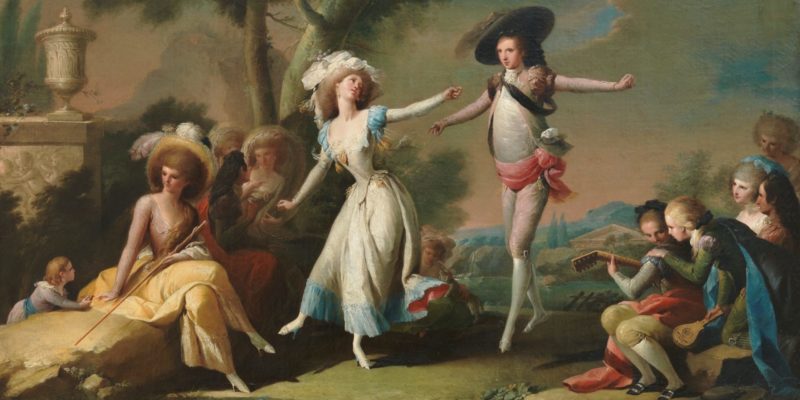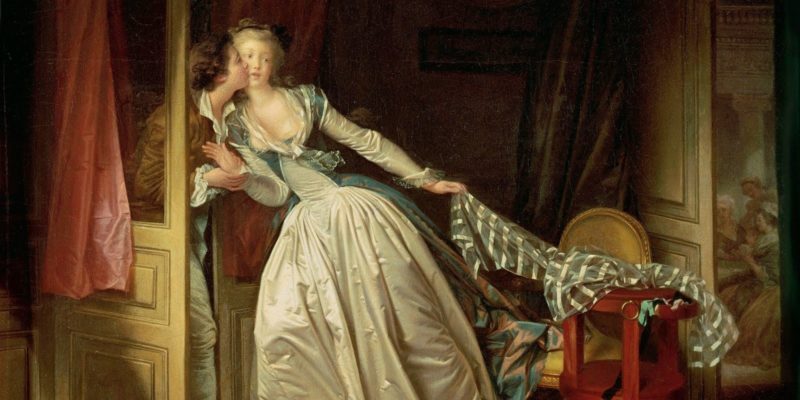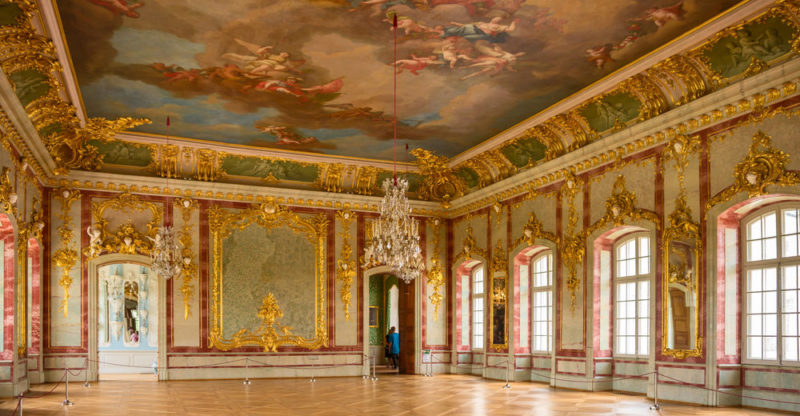We explain what the rococo is, its origin and its characteristics. In addition, the architecture, its main representatives and more.
What was the rococo?
Rococo was an artistic movement that first originated as a decorative art in France and spread across Europe between 1730 and 1770. It signified the end of the Baroque period (1600 - 1750) which also reflected absolutist opulence, but since a dark, pessimistic and religious aesthetic.
Rococo was a style that represented the aristocratic life of the time and was characterized by elegance and exuberance in decorative ornamentation, painting and architecture , with the particularity of using more vivid and cheerful colors compared to Baroque art.
The term rococo comes from the French words rocaille which refers to "stone" and coquille which means "shell", two elements that stood out in the ornamentation for their ability to be worked and for their value as they were elements that came from nature.
Rococo characteristics
The Rococo was an artistic style that lasted for a few decades, compared to the Baroque movement that resulted in a period in the history of art. Although both styles tend to have similar aspects, the rococo was characterized by:
- To develop first in the decorative arts and interior design, then to exert his influence in architecture and painting.
- Represent the aristocratic opulence , something similar to the Baroque style, with the difference of the use of more vivid and intense colors.
- Connote the refined , the pleasant and the elegance.
- Representing the ostentatious events and social gatherings of the time.
- Containing too many decorative elements , with wavy and asymmetrical lines.
- Not respecting human proportions , as the baroque style did.
- Represent a mundane and superficial art , away from religious concepts or spirituality.
Origin of the rococo style

The rococo arose as a reaction against the dense and heavy style of the Palace of Versailles of Louis XIV in Paris, and against the baroque art established at that time. Artists such as Pierre Le Pautre, JA Meissonier, Jean Berain and Nicolas Pineau sought to develop a lighter and more sensual decorative style for the new residences and palaces of the nobility.
The Rococo style was differentiated from the Baroque by the interior decoration of walls, ceilings and moldings, full of delicate interlacing of curves, asymmetrical lines and natural forms such as seashells. Pastel colors, ivory white and gold predominated, and the use of mirrors to give a greater sense of spaciousness in the environments. Rococo ornamentation was also applied to porcelain, objects and furniture.
Rococo painting

Rococo painting was characterized by the use of light colors and techniques that recreated greater luminosity in the scenes. The predominant themes, always highlighted by the opulence of aristocratic society, dealt with love , mythology, landscapes, and social gatherings. Painting was also part of the ornamentation of buildings, such as ceilings and domes of basilicas and palaces.
Rococo architecture

Rococo architecture was highlighted by simple facades, albeit with expansive gardens and extravagant interiors . The ornamentation was ornate, with columns in the shape of a spiral and overloaded with ornamentation, the use of pastel colors and many details in gold. The style was accompanied by objects and sculptures decorated in an exaggerated way.
Some examples of Rococo architecture are:
- The hall of Monsieur le Prince in the Palace of Chantilly , France. It was decorated by Jean Aubert and completed in 1722.
- The oval hall at the Hotel de Soubise , Paris. It was decorated by Germain Boffrand and completed in 1735.
- The Amalienburg building in the Nymphenburg park of Munich, Germany. Considered the best example of Rococo art built by Francois de Cuvilliés. Construction was completed in 1739.
- The Residenztheater or National Theater building in Munich, Germany. It was built by Karl Hocheder and completed in 1951. Starting in 1950, after World War II , it was rebuilt like much of the city of Munich. Many details of the theater's original Rococo art were lost.
- The Vierzehnheiligen basilica located near Lichtenfels in Bavaria, Germany. It was designed by Johann Balthasar Neumann in honor of the fourteen holy intercessors according to a Catholic tradition. Construction was completed in 1772.
- The Wies Church or Wieskirche (begun 1745-1754) near Munich, Germany. It was built by Dominikus Zimmermann and decorated by his older brother Johann Baptist Zimmermann with a simple façade and extravagant interior ornamentation. Construction was completed in 1754.
Rococo representatives
Among the main representatives of the Rococo style are:
- The French Jean-Antoine Watteau, 1684 - 1721.
- The French Jean-Honoré Fragonard, 1732 - 1806.
- The Belgian Francois de Cuvilliés, 1695 - 1768.
- The French Jean-Baptiste Simeon Chardin, 1699 - 1779.
- The French François Boucher, 1703 - 1770.
- The Englishman Thomas Gainsborough, 1727-1788.
- The Puerto Rican José Campeche, 1751 - 1809.
- The Spanish Francisco de Goya, 1746 - 1828.
- The French Marie Louise Élisabeth Vigée-Lebrun, 1755 - 1842.
- Frenchman Louis Carrogis Carmontelle, 1717 - 1806.
Abubakr Conner brings a diverse skill set to our team, and covers everything from analysis to the culture of food and drink. He Believes: "Education is the most powerful weapon that exists to change the world." .
Leave a reply
Your email address will not be published. Required fields are marked *Recent post

Sport: What Is It, Types, Risks, Features, Characteristics and Examples

Dogs: Emergence, Features, Characteristics, Feeding and Breeds

Story: Definition, Elements, Structure, Features and Characteristics

